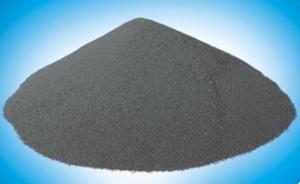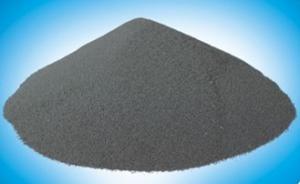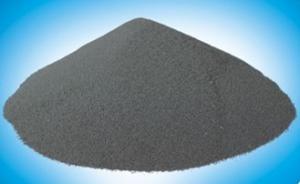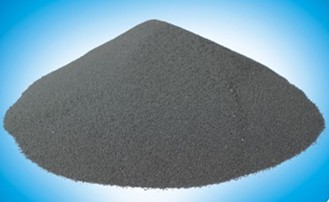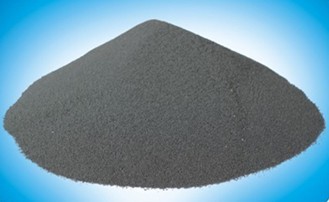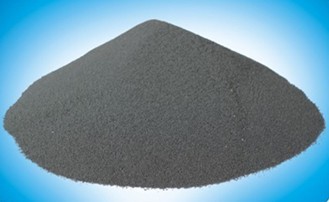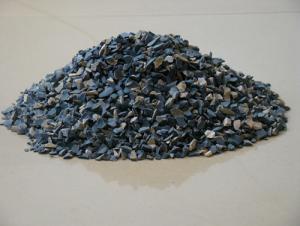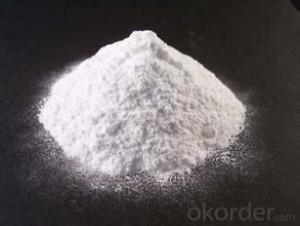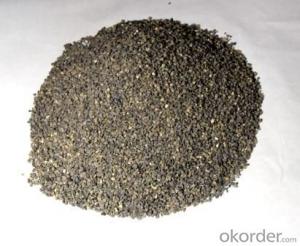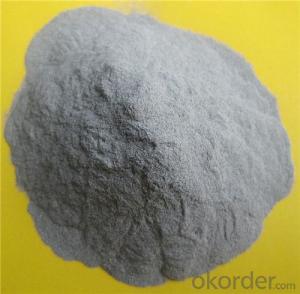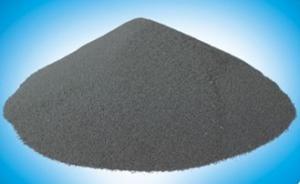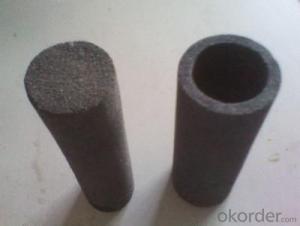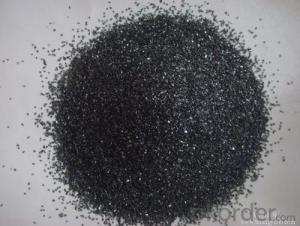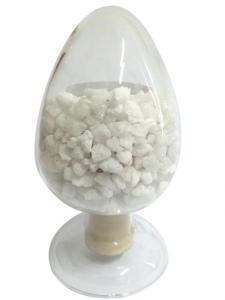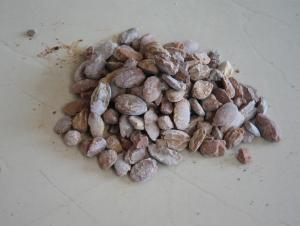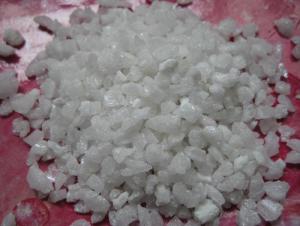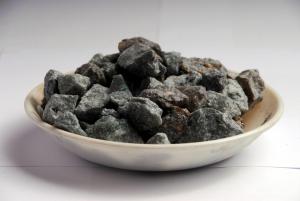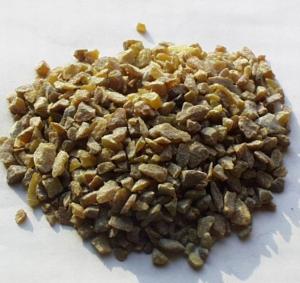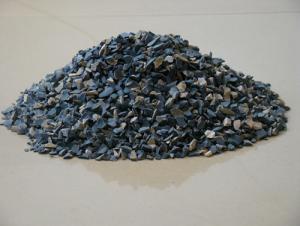Raw Materials for Refractory CSP Slab CCM Mold Protect Slag
- Loading Port:
- China Main Port
- Payment Terms:
- TT OR LC
- Min Order Qty:
- -
- Supply Capability:
- -
OKorder Service Pledge
OKorder Financial Service
You Might Also Like
CSP slab CCM mold protect slag
Product description
Be known as metallurgical technology "high-tech" thin slab continuous casting in the past two years developing fast in China, and with the pearl river steel, handan steel company baotou steel companies and companies such as introducing CSP technology, now and a number of handan has gone into production. Corresponding to bring thickness thin, drawing speed high thin slab continuous casting mould manufacture of protective slag production problem, 2003 with the joint work BeiKeDa developed, and obtained the breakthrough, low carbon steel, middle-carbon steel and experimental results show that the protective slag reached the country slag protection quality level, to prevent leakage steel and binding in slab surface quality better than import slag, be expert evaluation for domestic alternative product.
Applicable condition
Model index | SiO2 Al2Q2 Fe2 O2 CaO MgO Na2O F C R |
TY-2 | 28±3 3~6 <1.5 30±3 <2 9±2 6~9 7~10 1.07±0.2 |
TY-9 | 31±3 3~8 <2 31±3 3~6 9±2 4~7 5~9 1.00±0.2 |
Physical components
model | Water melting point ℃ melting speed (S / 1300 ℃) size 0.1 ~ 1 viscosity (poisson / 1300 ℃) |
TY-2 | ≤0.5 1100±30 25~35 90% 1.25±0.5 |
TY-3 | ≤0.5 1100±30 18~28 90% 1.70±0.5 |
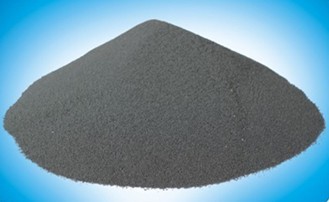
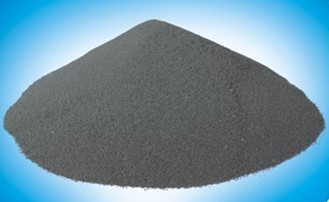
- Q: What is the upper temperature limit for refractory materials?
- Different materials are different. In the professional field, there is a triangulation cone softening point experiment as a reference for using the upper temperature limit.
- Q: What are included in roof thermal insulation fireproofing material?
- Aluminium foil, bubble, aluminium foil/air bubbles/fireproofing aluminium foil thermal insulation material, fireproofing bubble thermal insulation material, fire?retardant thermal insulation material, thermal insulation construction materials, aluminum foil insulation material.
- Q: What's the definition of fire endurance of the fire-resistant coating for steel structure?
- Fire endurance (h): Under the condition of standard fire resistance test, the time when the building components, accessories, or structure is subjected to fire to the time when they loose stability, integrality or thermal insulation is called fire endurance which is showed in time. Steel is the kind of building material that is nonflammable with many properties of seismic resistance and bending resistance. In practical applications, steel can improve the load capacity of buildings in a relative way, meet the needs of buildings design, beauty and mould, and it can also avoid the defects of poor flexibility and tensile strength of buliding materials like concrete. Therefore, steel is quite popular in the construction industry, and it is widely used in single-story or multi-storey skyscrapers, plants, warehouses, waiting rooms and airport terminals, etc. However, as a kind of building material, it has some unavoidable defects in fire prevention. That is its mechanical properties like yield point, tensil strength and elasticity modulus will decrease dramatically with the rise of the temperature.
- Q: How to choose refractory material
- The crystalline refractory fiber mainly consists of polycrystalline mullite fiber, the optimum use temperature is 1300 DEG C, and the long-term use temperature of polycrystalline alumina fiber is 1400 DEG C. The service temperature of ordinary refractory fiber is 1150 degrees, and the use temperature of advanced refractory fibers (such as alumina, zirconia, refractory fiber) can reach 1700 degrees centigrade
- Q: What's the refractoriness and how to measure the refractoriness?
- Bottom each side length is 8 mm and upper side length is 2 mm. Under a certain temperature-rising speed, when heating, refractory's resistance to high temperature from melting is called refractoriness. The properties of cross section into an equilateral triangle and height is 30 mm. When it bends down until the vertex and chassis contact temperature is the refractoriness of sample. It bends due to the influence of its weight. Make the will-measured material into standard pyrometric cone.
- Q: What is refractory cement?
- Refractory cement is also known as aluminate?cement. Aluminate?cement emplys bauxite and limestone as the raw materials, calcium?aluminate obtained by calcining as the main component, being made into clinker containing 50% of aluminium oxide and finally being made into hydraulic cementing material by grinding. Aluminate cement is often yellow or brown, sometimes gray. Aluminate cements' major mineral are monocalcium aluminate (CaO · Al2O3, abbreviated CA) and other aluminate as well as a small amount of dicalcium silicate (2CaO · SiO2), etc.
- Q: For refractory, why is it necessary to store the first mixing materials for some time under proper moisture and temperature?
- It is mainly to remove gas form chemical reactions in the pug, give full play to plasticity and binding properties of combined, and store unburned?brick whose cememting agent is phosphoric?acid or aluminium?phosphate for some time under proper moisture and temperature. For example, to avoid the formed bricks in the initial stage of drying and firing form cracking due to hydration of calcium oxide. Mixing materials is to store the first mixing materials for some time under proper moisture and temperature in order to improve the evenness and moldability of pud, such as making the distribution of combined clay and water more even. The length of storing chiefly depends on the process requirements and the characteristics of blanks. For the producing pug of high temperature kiln furnitures, the storing time is longer. The function of storing mxing materials varies with different natures of blanks. For honeycomb ceramics, it is to fully digest calcium oxide in blanks. For storing magnesia brick blanks containing much calcium oxide, it should be stored for some time in proper humidity and temperature.
- Q: Classification of porosities in refractories and their effects on properties
- The pores in refractory include open pores, through pores and closed pores.
- Q: I am a refractory material manufacturer, sold products, money is always not back, anxious to die, what is the way?
- Metallurgical industry downturn. There is fierce competition in the refractory industry.
- Q: what is steel fire door made of ?
- 1. fire resistance steel door has steel made door frames, door leaf framework and door panels. if the door leaf is filled with nontoxic fire insulation material, added with fireproof hardware accessories, which consists of a door that is fire resistance. 2. Category 1)safety facilities to prevent underground building from fire expansion and control volatilation. It is usually divided into steel and wooden fire door. 2) Class A fire doors, fire endurance of 1.5 hours; B fire doors, fire endurance of 1.0 hours; Class C fire doors, fire endurance of 0.5 hours. 3) In fact, there are many types of fire doors. For example, there are wooden made fire doors glass fire doors and steel fire doors based on different materials. access control fire doors, entrance fire resistance door, interior fire doors, explosionproof and fireproof door, quick-lock fireproof doors, quick opening door encountered with fire and multi-functional fire doors. 4) Based on the installation location: External fire doors and built-in fire doors. 5) divided by technology: Electronic fire doors.
Send your message to us
Raw Materials for Refractory CSP Slab CCM Mold Protect Slag
- Loading Port:
- China Main Port
- Payment Terms:
- TT OR LC
- Min Order Qty:
- -
- Supply Capability:
- -
OKorder Service Pledge
OKorder Financial Service
Similar products
Hot products
Hot Searches
Related keywords
